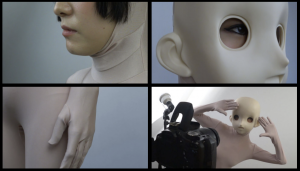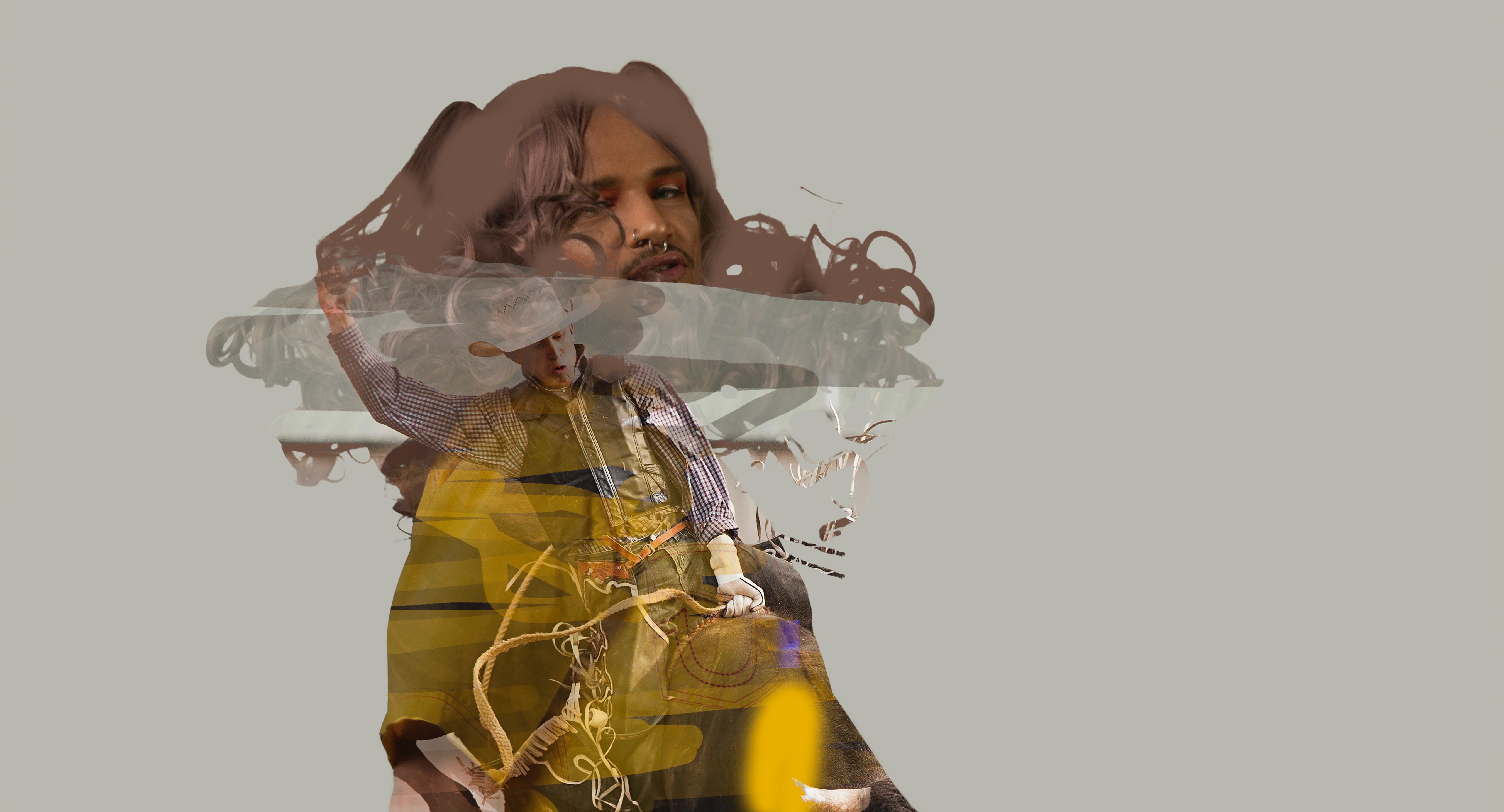Dho Yee Chung’s Point Zero (2019) raised the question of what is real and what is not and a discussion about the apparatus people use to hide their identities to guard against social norms. In this interview, Chung talked about the development of her idea of the relationship between computers and humans, the process behind her artistic decisions, her idea about “the prototype human”, and the influences ubiquitous digital images and identity have toward her works.
:::
DigA: Describing Point Zero, you said you “see the screen-surface as another form of a mask, or prosthetic body available to anyone, regardless of their nominal identity.” What shaped your idea of the relationship between screen and skin and between computers and humans? How did you develop this idea?
Dho Yee Chung: There are some reoccurring visual themes in my work such as skin, mask, and costume. Within my work, they function as an apparatus that disguises their appearance. In this way, they can manipulate the impression that others might have of them. The use of masks raises a question on authenticity and how hyperreality can be easily fabricated. I expanded my idea of mask to screen as technology has become the body’s new membrane. Technology is interrelated with people; they are modifying technology and in turn, are perpetually modified by technology. As screens become a pervasive part of daily life and most media also embrace various forms of screen display, this mediation between media and people becomes more and more evident. In this space of mediation, the screen plays a unique role as a shelter, filter, or mask and costume for camouflage instead of a simple representation because the screen is a tool that identifies, renders, and finally clarifies people in society.
DigA: How do you define “the prototype human”? Did this definition change since your creation of other pieces from your portfolio (such as a Prototype of human being) to this piece?
DYC: Throughout my work, I constantly use the prototype human, a narrational figure, as a device to imply contemporary confusions, fears, and desires, allegorizing transformation and the proliferation of technology in everyday life. While technological development allows us to easily manipulate our identity, we found ourselves empty shells, that are vulnerably projecting social expectation onto ourselves. This skin-toned figure suggests an empty surface for self-representation, which is a process of externalizing an impression that others might have of oneself.
The fundamental definition of the prototype human remains unchanged within my work while the story which this figure delivers to the audience is different in every project. I am particularly interested in adopting a unique narrative style. Linking the socio-cultural context in reality to hyperreal representation, I often initiate the narrative from a private and intimate point of view before expanding to a more holistic and transcendental vision.
DigA: How did Point Zero forward your exploration of “the prototype human”? Did this exploration influence other pieces in your portfolio?
DYC: My initial approach to the prototype human was done with my other video titled A prototype of a desired being (2018) This piece explores how photography is encoded with desires in consumer capitalism. The narrative figure in the video elaborates this idea by moving, dancing, and posing in front of a camera. This gender-neutral figure has continuously evolved throughout my works. I intend to infuse the virtual with fictions and fantasies and the actual with the body and the flesh to create a unique environment of mixed reality.

DigA: Point Zero starts off with a half-transparent figure, referred to as “I”, waking up from a surface. This surface is referred to as “the zero point of cinema 4D by Maxine Computer Gmbh”. Later, the reference changed to “the zero axis of a hyperlink”. How would you expect us to interpret this change of the physical location?
DYC: I refer to the zero point as a cinematic environment that is imaginative and phantasmal, deliberately organized to create multifocal and nonlinear imagery in the blend of film footage and computer graphics. That is not a physically existing space but endlessly changing with different technologies that allow the prototype human to be digitally cut, morphed, rendered, and composited and this conveys meaning in subsequent scenes. The implication of my transformative visual methodologies is, in a word, narratives of “becoming” rather than “being.”
DigA: Can you talk about how ubiquitous digital images and identity influence your other works?
DYC: I believe ubiquity of digital images and identity empowers hyperreality which is seen as a condition in which reality and fiction are seamlessly blended together so that there is no clear distinction between them. It is one of the postmodern characteristics that can be found in contemporary visual media. In a society where simulacra and reproduction are rampant, traditional social values and standards become dysfunctional. The prototype human represents people in contemporary society, finding that existing reality is not working for them. They place more significance on the digital space than social reality; they seek an alternative meaning of life from virtual media. Through my work, I attempt to explore the relationship between hyperreality and utopia as predicated by a question of transcendence.
:::

Dho Yee Chung is a graphic designer originally from South Korea. Since the age of 16, she has lived in multiple countries, namely the United States, India, and the Netherlands. Her experience of being in a cross-cultural and diverse position taught her that power resides in a plurality of voices and that acceptance of diversity leads to the mutual recognition and enrichment of individuals. This, in turn, has fostered her interest in the global impact of the Asian visual media. Her work questions how media mediates and shapes the narratives of human activity in order to understand the self in the digital era.



